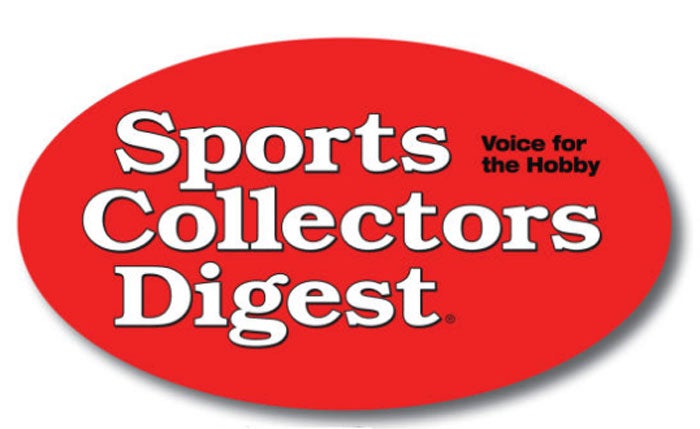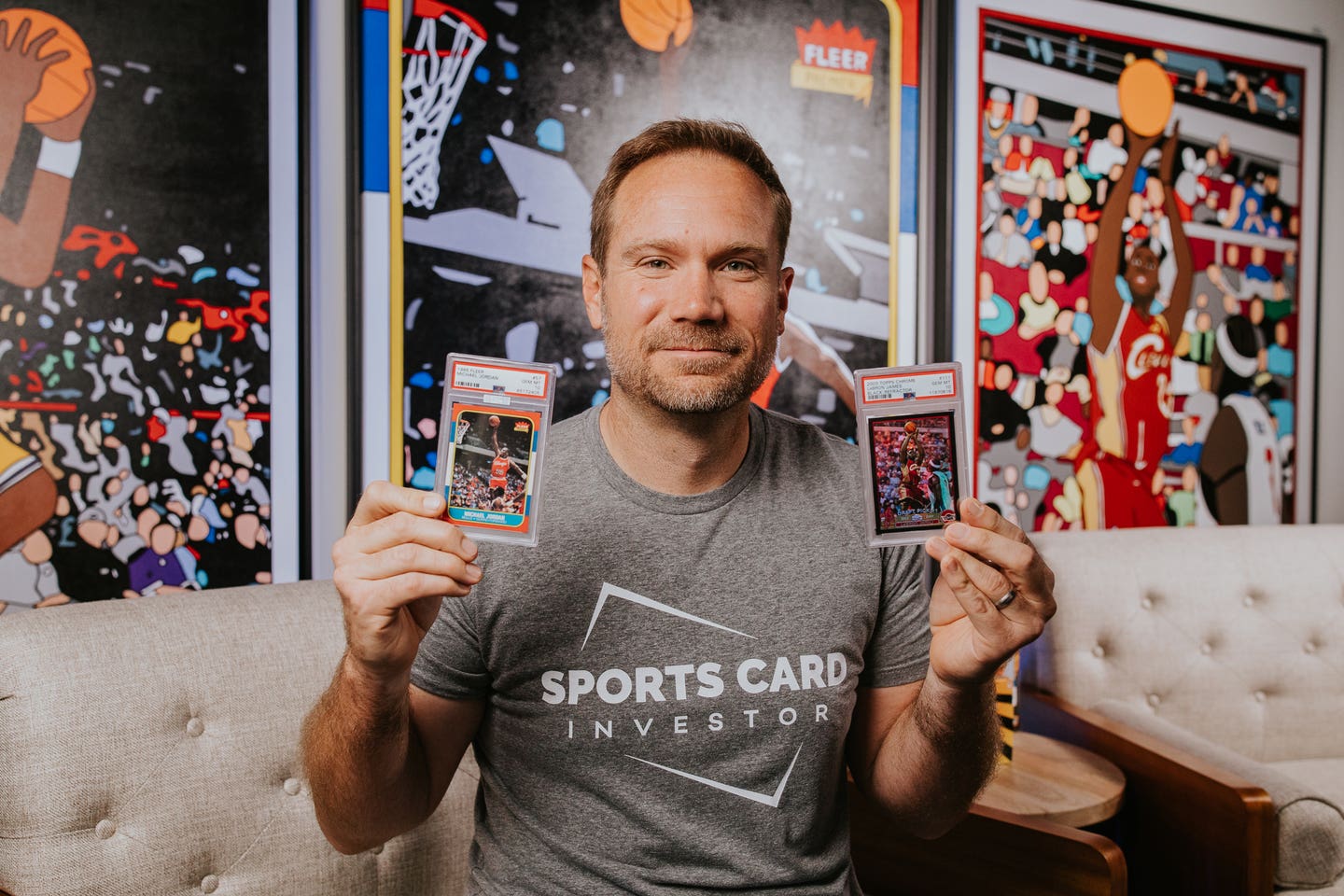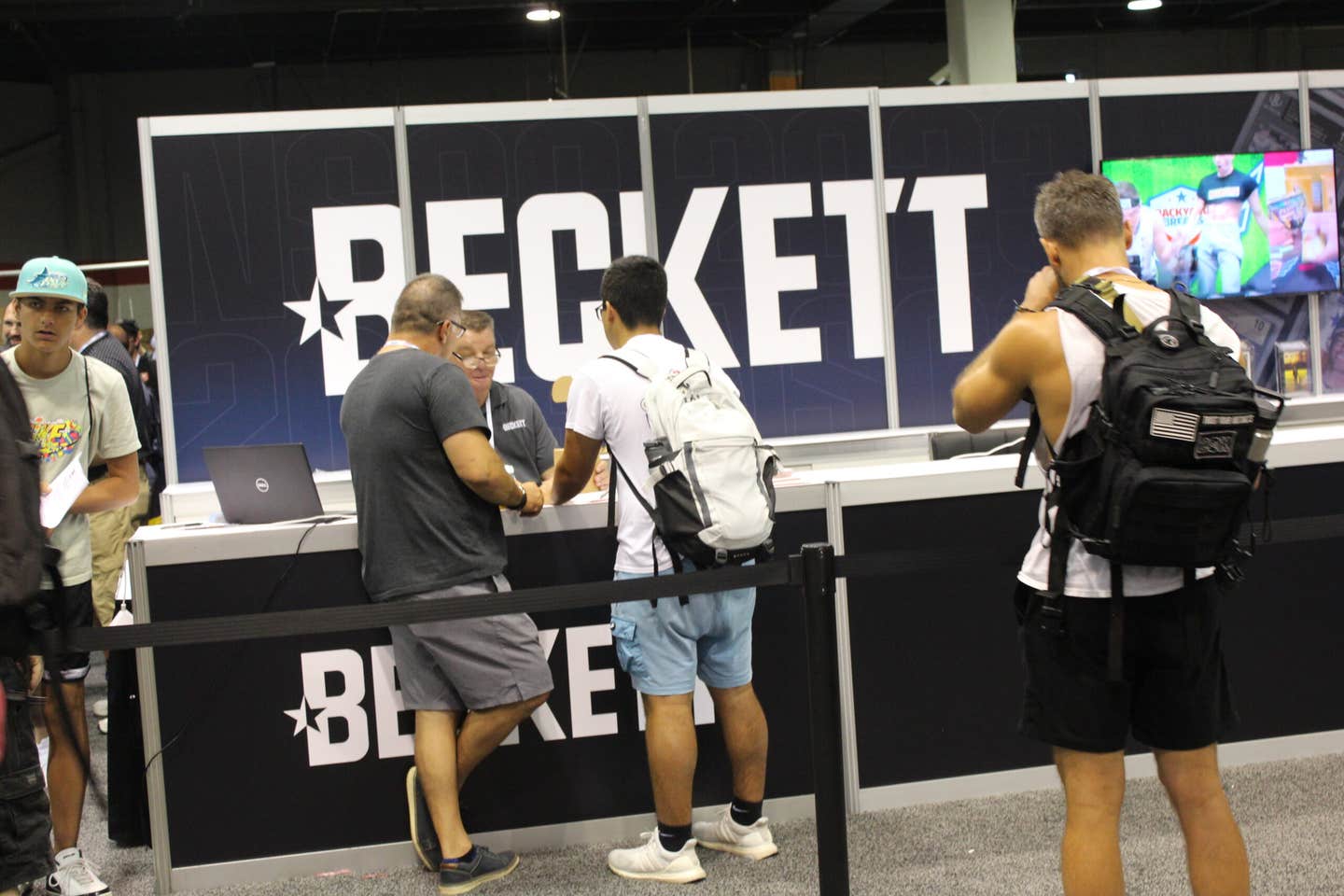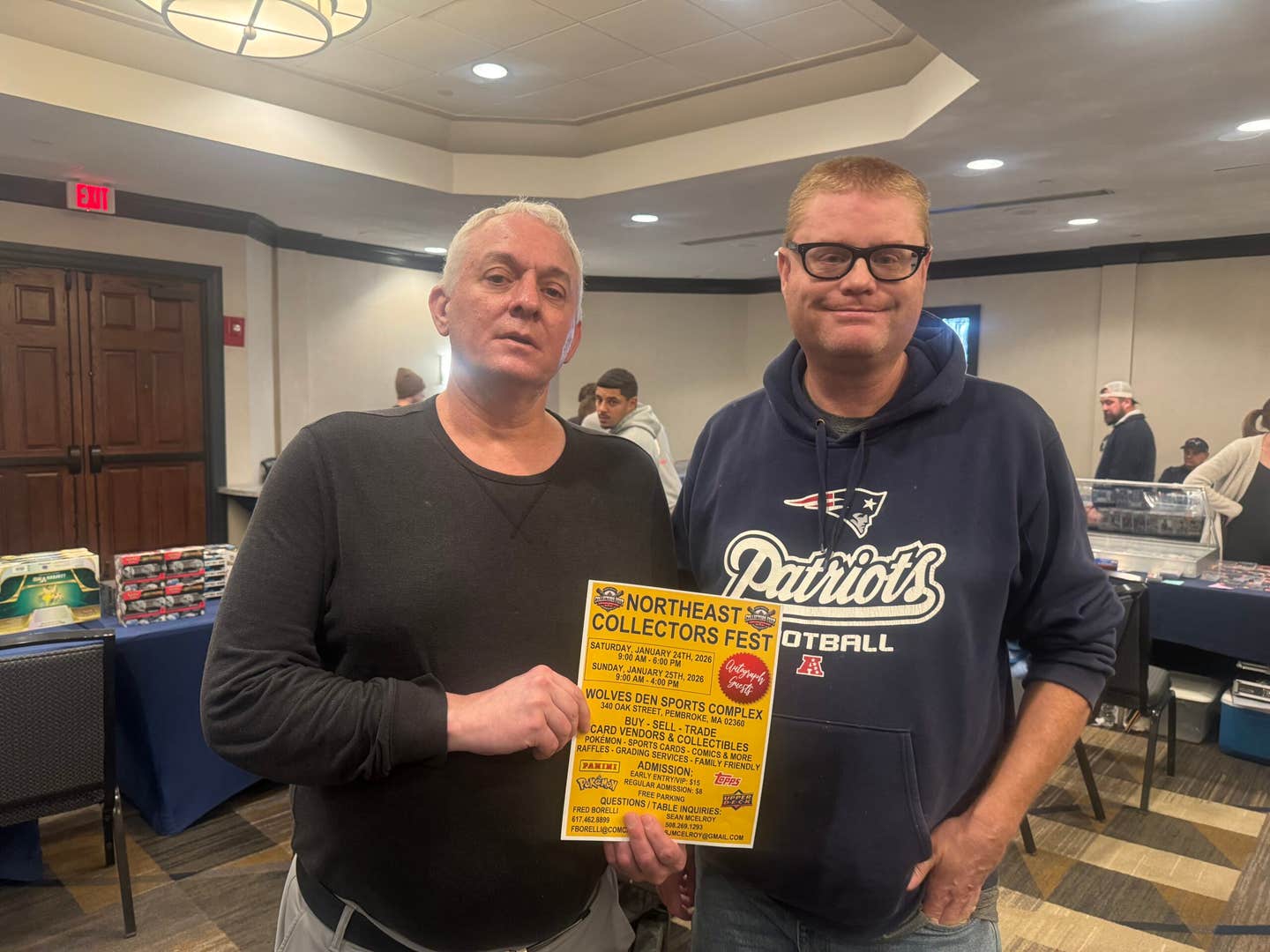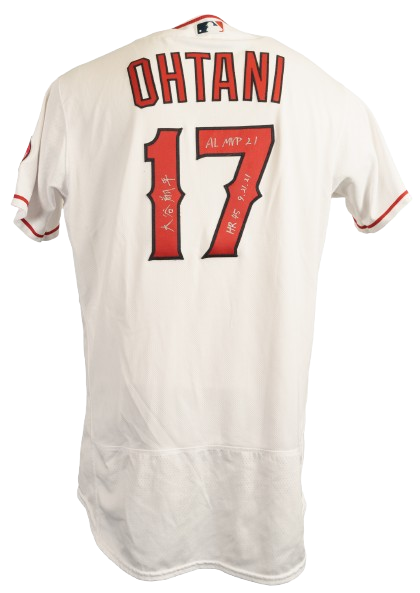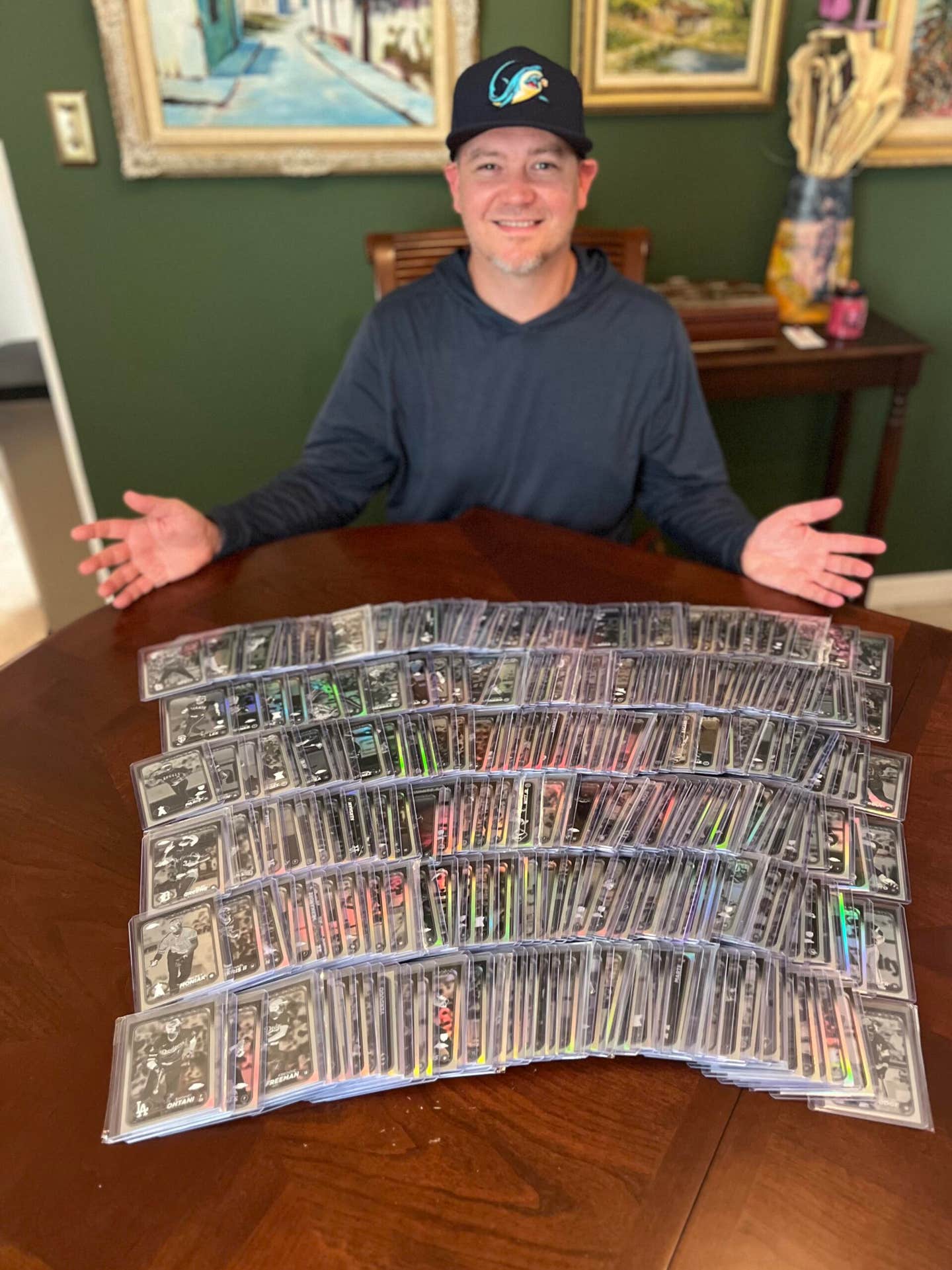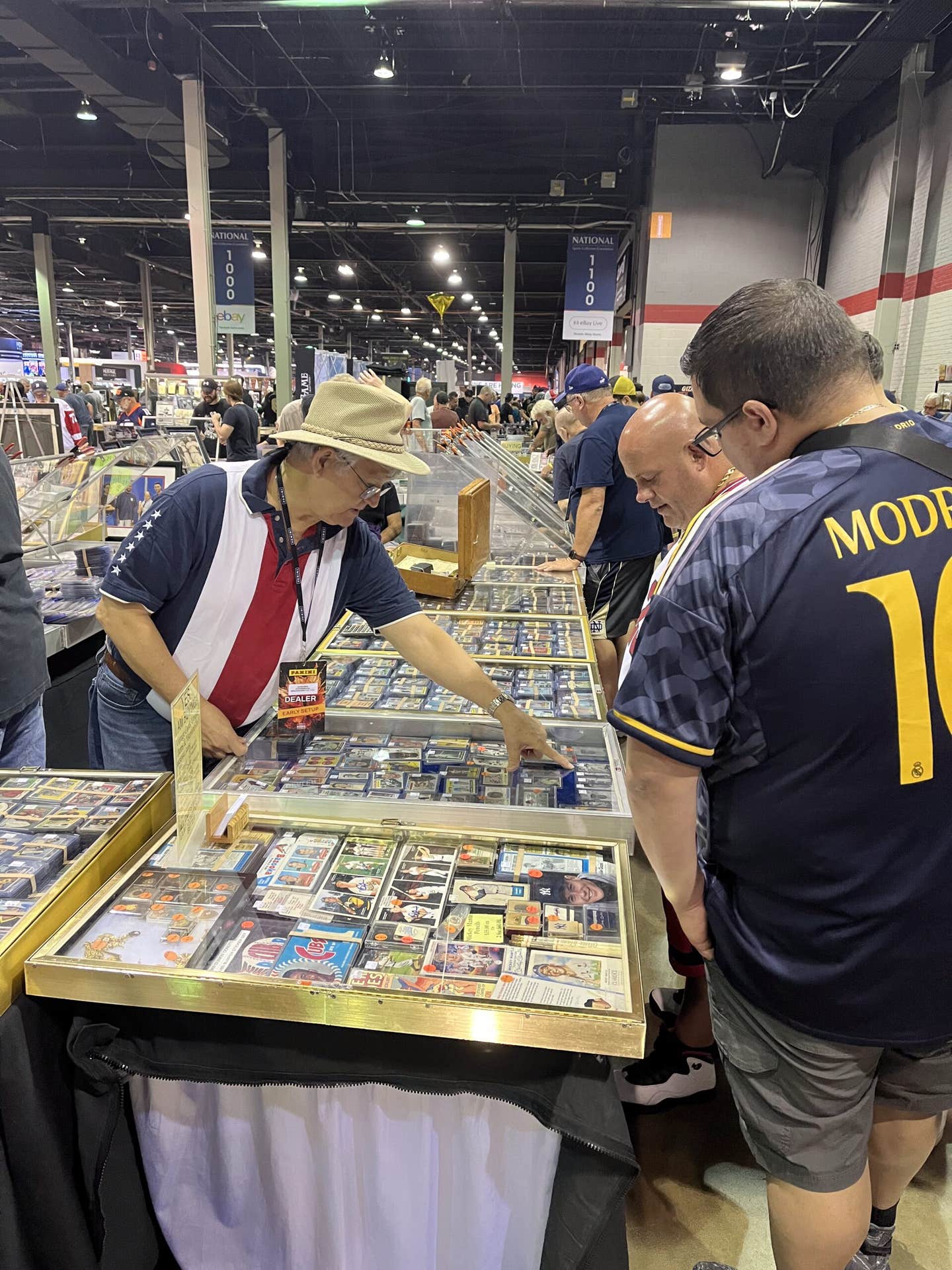News
It’s All in the Cards: Defunct Teams, Leagues Part of Collection
John Fulgaro, author of John Fulgaro’s Sports Logo Guide, couldn’t afford to attend ballgames as a kid. Instead, his mother suggested he write clubs requesting memorabilia to enjoy the fun vicariously. He said when the teams sent items back, it was “like receiving a Christmas package.”
Today, Fulgaro owns a most unusual assortment of team business cards, stickers and decals representing nine sports from more than 35 different professional and minor leagues. Dating from the 1930s to the present, the collection includes more than 2,000 business cards. Fulgaro stopped counting decals after they numbered 20,000. Some team presidents/owners and players have autographed the cards. August Busch of the St. Louis Cardinals even sent him a personal note.
Fulgaro has collected decals/stickers for more than 30 years, with his prize possession being his 1961 San Francisco Saints basketball decal, based on a short-lived team. But he has many items he holds precious, such as early 1960s American Football League “mascot-type” decals of Johnny Jet and Charlie Charger.
“Most people don’t know about them because they are obscure,” Fulgaro said of the decals. “During the 1960s and ’70s, there wasn’t the Internet. A lot of distribution was regional in nature. There was a smaller population of sports fans. There were no more than around 10,000 decals made. A vast majority ended up on someone’s wall.”
Fulgaro said he’s probably the only person in the world who has the complete set of the Western Basketball Association decals from its only year in existence, 1978-79. It included the Washington Lumberjacks and Reno Bighorns. He is missing just one team of the American Basketball Association during the 1967-78 time frame, the Anaheim Amigos. There were 31 teams.
Fulgaro’s collection is varied, also containing foreign items and memorabilia representing women’s leagues. He has collected logos from Canadian lacrosse, soccer and football leagues, Japanese baseball, Australian rugby and European and South American soccer.
He prides himself on having the largest men’s and women’s collection of both business cards and decals in the world, including memorabilia from the 1993 Salinas Aces of the Women’s Western Volleyball League. He even owns a business card from a defunct 2004 cricket league. He cherishes a very rare 1940s L.A. Thunderbirds decal from the National Roller Derby League. He also has a set of the Roller Hockey International (RHI) teams business cards.
Comparing the size of his business card collection to others in the International Business Card Collectors Group, none have even come close. His widespread focus on items from a number of sports, leagues and teams both minor and professional has led him to a diverse collection.
“Most collectors specialize in an area,” Fulgaro said.
Fulgaro said that eBay is a good indicator of the value of items. The Oakland Oaks of the Pacific Coast League 1940s-50s decals sell for $100-$125.
Fulgaro does not resell his memorabilia. He likes to trade because that’s more fun, and he buys from others. His favorite story is of a man wanting to sell his sick son’s collection of early ’70s and ’80s decals and stickers. He knew Fulgaro would appreciate them, so he told him to name his price, no quibbles.
“I still have them in the original binder and refuse to break them up,” Fulgaro said
Collector’s market?
To build a collection in this field, Fulgaro recommends getting a jumpstart by collecting minor league hockey and basketball memorabilia. He said that many collectors also request items from major NFL and MLB clubs. Write to those teams, but make sure you include a self-addressed envelope. Look in your own backyard, too.
“Radio stations have bumper stickers and decals and are pretty liberal with them if you visit them,” Fulgaro said.
Another benefit of this collecting genre is that the category is not defaced with fake business cards and decals.
“There doesn’t seem enough financial incentive to fake them,” Fulgaro said, adding that he’s identified ones by their poor print, wrong paper stock and color. He said collectors just need to know the primary manufacturer and what format the decal came in at that time period, such as if it is water-soluble or a peel-back.
You can obtain further information about how to identify and obtain logos in Fulgaro’s book, John Fulgaro’s Sports Logo Guide and Free Sports Memorabilia: Where To Get It, which he co-authored with his wife, Elizabeth. According to Fulgaro, the discontinued third edition of John Fulgaro’s Sports Logo Guide has sold more than 30,000 copies.
“Collectors could clip the logos and use them as a reference but not reproduce them on a T-shirt, for instance,” Fulgaro said about the book’s black-and-white printing. “No one had consolidated logos before.”
Fulgaro hopes to have a book about an obscure sports league available soon, and later in 2009, an online edition of his Sports Logo Guide.
Fulgaro stores his collection in a 200 square-foot office building detached from his home, making sure his business cards are not exposed to much light or extreme temperatures.
But Fulgaro doesn’t expect to hold onto his collection forever. Eventually, he and his wife would like the Smithsonian to have it. If not that museum, he said the football and baseball museums have expressed interest in it.
And even with the talk of his collection’s fate, he has not lost his enthusiasm.
“My goal is to have the largest, most diverse and most complete collection in the world,” Fulgaro said, adding that he feels like a detective sleuthing to find those rare items from the minor and lesser-known teams that “come and go so quickly.”
Check out his website at www.johnfulgaro.com/sportscollection. It’s updated monthly.
Fulgaro is the man to talk to about sports business cards, decals and stickers. He even has New York retailers asking him questions about designs for their logos. For Fulgaro, the answers are all in the cards.
Ingrid Floyd is a freelance writer from Towson, Md.

